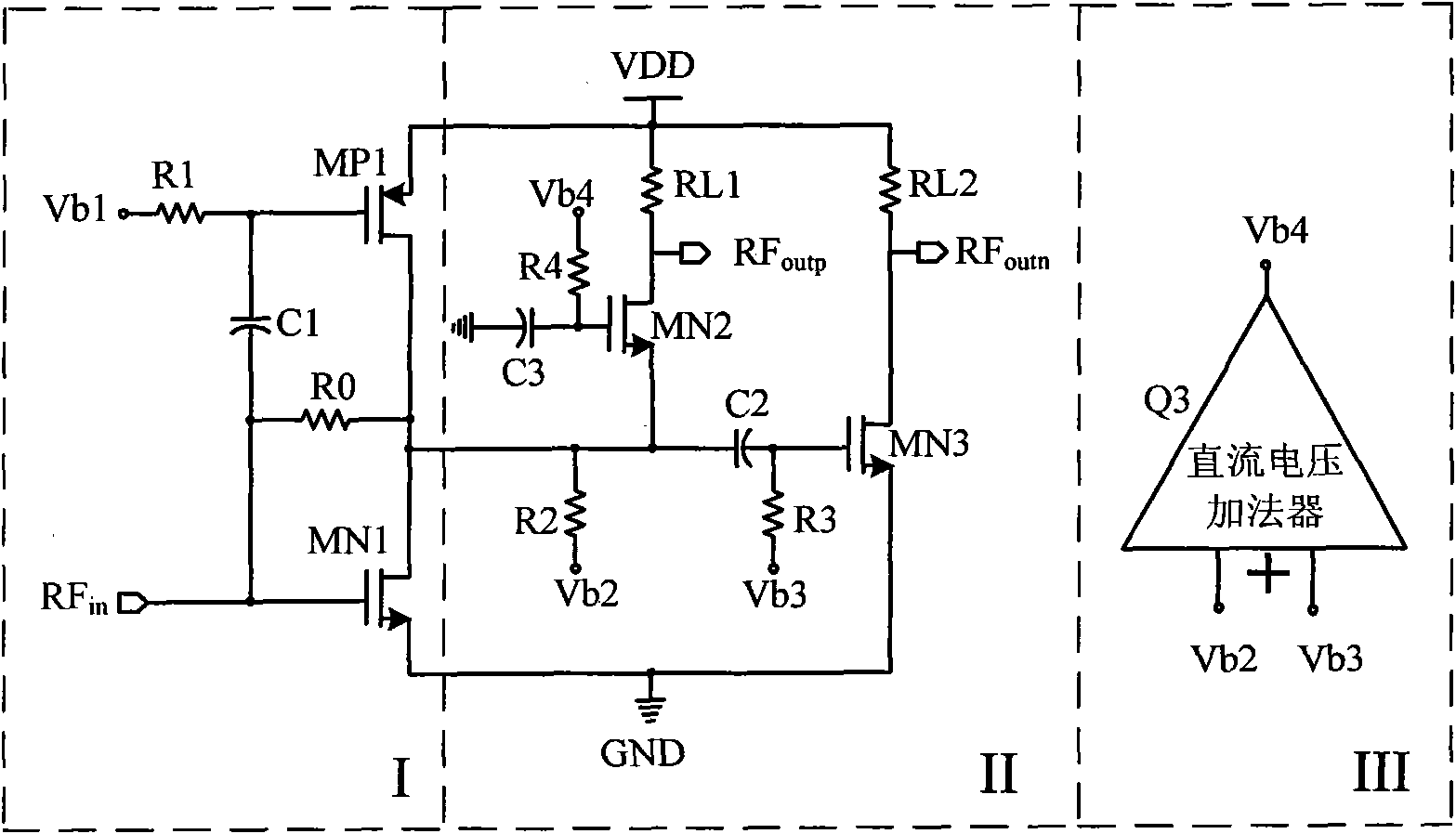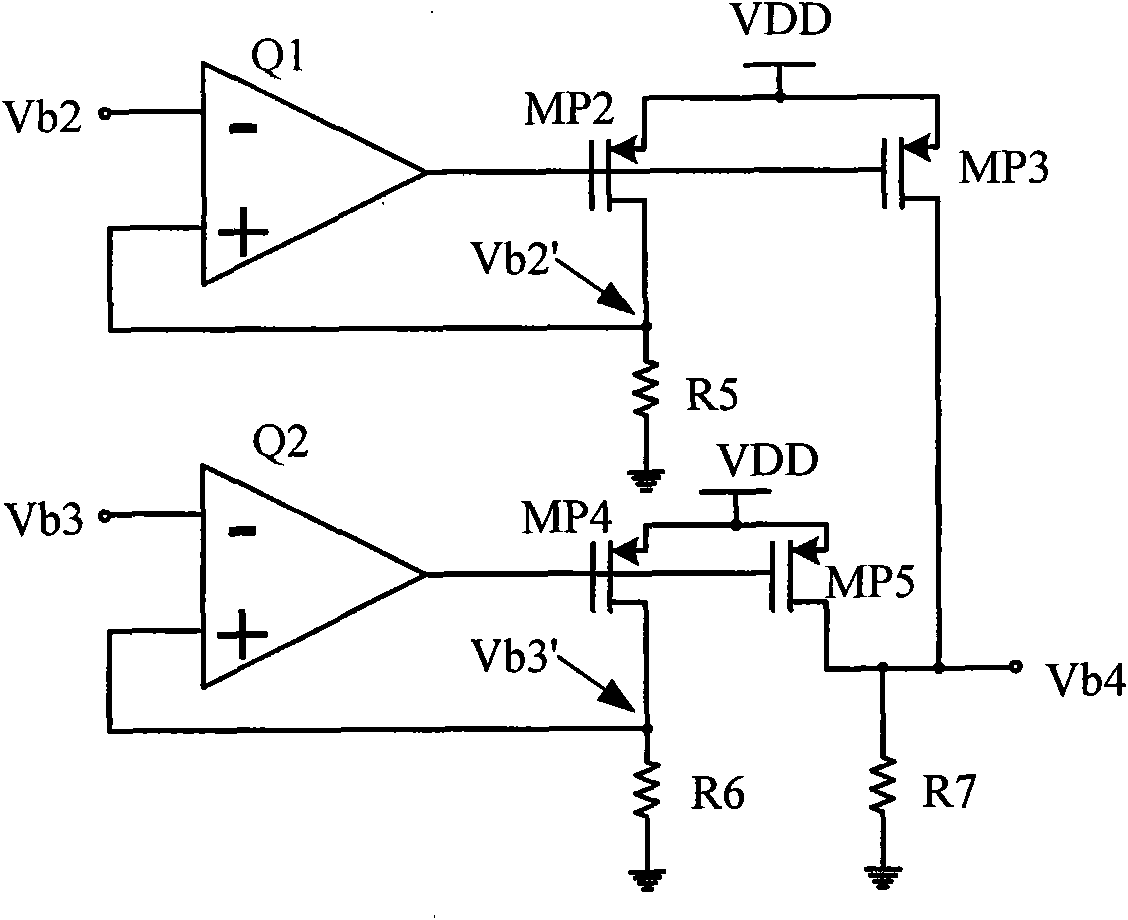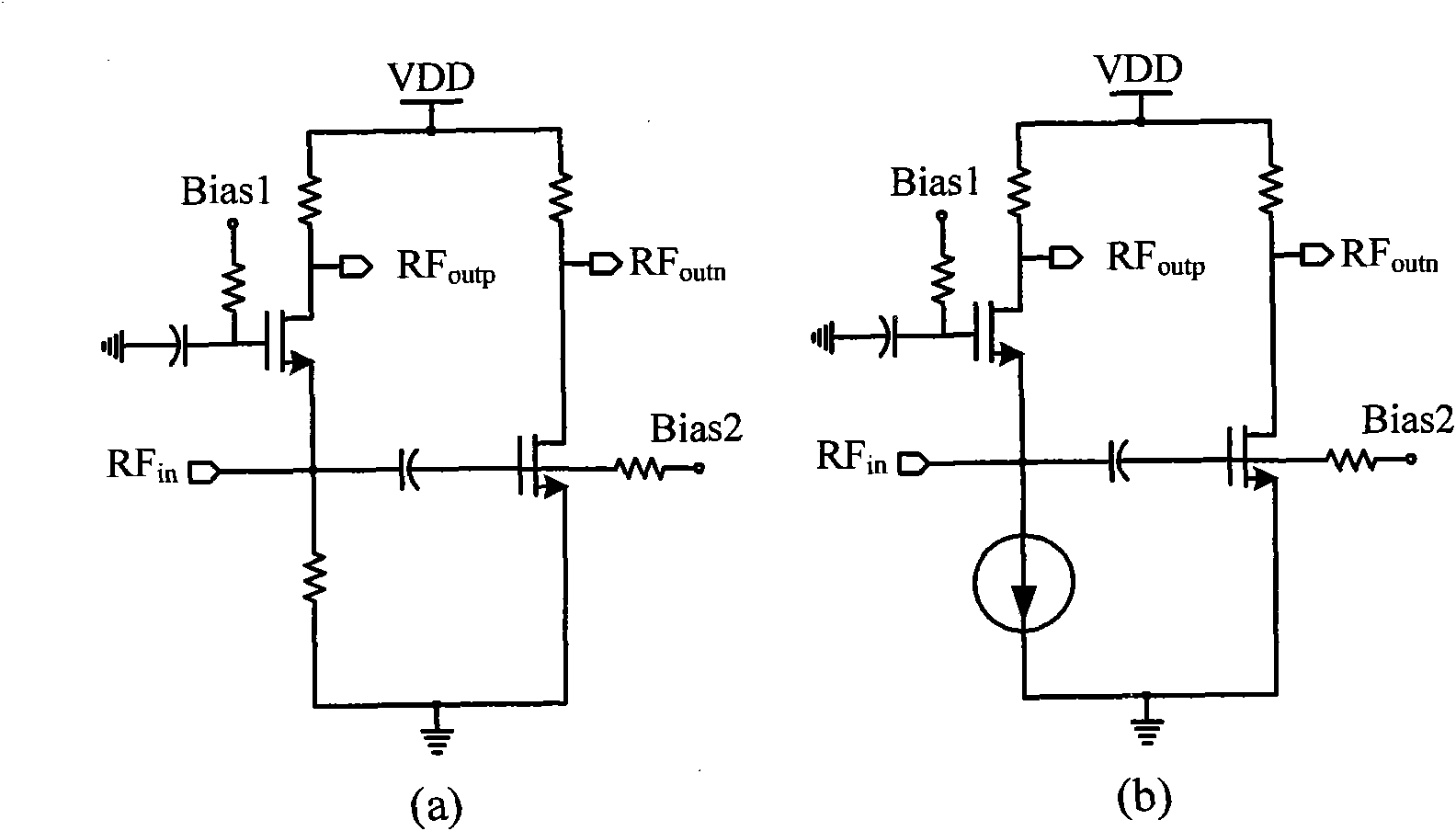Wide band radio-frequency low noise amplifier with single-ended input and differential output
A low-noise amplifier, differential output technology, used in differential amplifiers, DC-coupled DC amplifiers, amplifiers, etc., can solve the problem that the input impedance matching and low noise cannot be achieved, the amplifier cannot achieve broadband applications, and the realization of high integration is limited. problem, to achieve the effect of compact structure, improved dynamic range, and low power consumption of the circuit
- Summary
- Abstract
- Description
- Claims
- Application Information
AI Technical Summary
Problems solved by technology
Method used
Image
Examples
Embodiment 1
[0030] The broadband radio frequency low-noise amplifier of the single-ended input differential output that the present invention proposes, mainly comprises three parts: main amplifying circuit, such as figure 1 Shown in the dotted box I; single-ended to differential conversion active balun, such as figure 1 Shown in virtual box II; DC voltage operation circuit, such as figure 1 Shown in dashed box III.
[0031] The main amplifying circuit is mainly composed of main amplifying N-type transistor MN1 and auxiliary P-type amplifying transistor MP1, resistor RO, and capacitor C1. The connection relationship is: radio frequency signal RF in Input to the gate of the transistor MN1, the source of the transistor MN1 is grounded to GND, the drain of the transistor MN1 is connected to the drain of the transistor MP1, and at the same time connected to one end of the resistor RO; the other end of the resistor RO is connected to the gate of the transistor MN1, At the same time, it is con...
PUM
 Login to View More
Login to View More Abstract
Description
Claims
Application Information
 Login to View More
Login to View More - R&D
- Intellectual Property
- Life Sciences
- Materials
- Tech Scout
- Unparalleled Data Quality
- Higher Quality Content
- 60% Fewer Hallucinations
Browse by: Latest US Patents, China's latest patents, Technical Efficacy Thesaurus, Application Domain, Technology Topic, Popular Technical Reports.
© 2025 PatSnap. All rights reserved.Legal|Privacy policy|Modern Slavery Act Transparency Statement|Sitemap|About US| Contact US: help@patsnap.com



